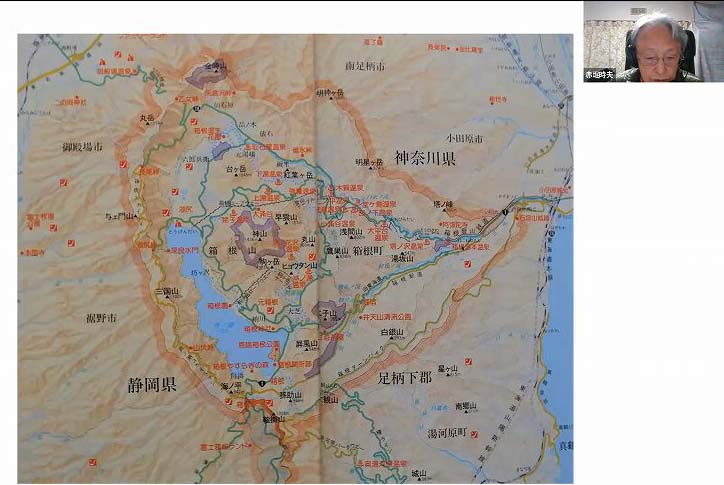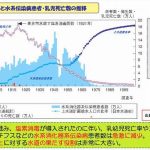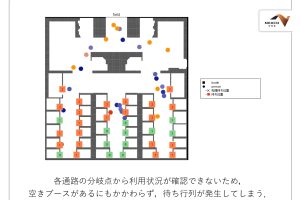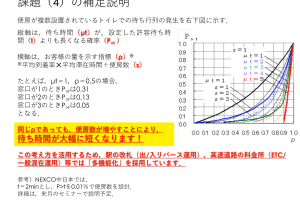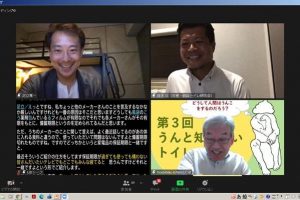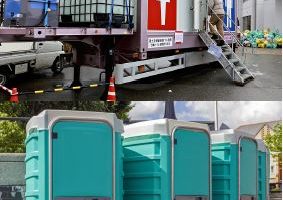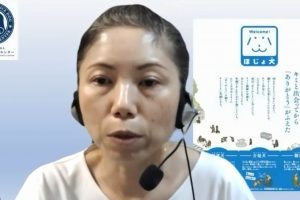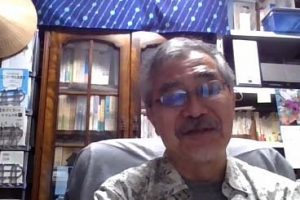Japan Toilet Association (JTA) Seminar Series,
The 11th seminar
Title: “The mountain toilet issues until now and future”
– Can the mountain toilet issues be solved only by the beneficiary burden?
Is it just self-responsibility matter!?-
Date: 17 March 2022 (Thu) 18:00-20:00 JST
Presenter:
AKABORI Tokio, Vice Chairperson of Japan Toilet Association,
Former Secretary General of the Natural Park Foundation
Organizer:
Yoshihiko Kawauchi, Ph.D., Japan Toilet Association vice chairperson,
Former professor of Toyo University.
(1) Current status of mountain toilets
AKABORI: I have been the secretary general of the Natural Park Foundation organized by the Ministry of the Environment. In connection with this, I have been involved in toilets in the facility management in the natural park. It has been eight years passed since I retired. The toilets in the natural park areas are mainly mountain lodge toilets and public ones in the designated places. These toilets have been improved over the last decade. These improvements owe very much to the efforts and contributions of the mountain lodge staffs.
Furthermore, Natural Environment Department in the Ministry of the Environment made it possible to use national treasury subsidies and various grants for the repair and improvement of the mountain toilets. However, there are still strong restrictions and resistance to applying public funds since the toilet in the mountain lodge is primarily private property. In many cases, it costs tens or hundreds of millions of dollars to maintain mountain toilets due to the installation of the expensive bio-toilet and exchange type cartridge toilet. The reality is that it is too harsh to burden for the mountain lodge owner as a small sole proprietor.
Even if the government has a system to cover the half-amount subsidy, the rest half must be taken out by the mountain lodge owner. The mountain lodge in 100 famous mountains in Japan can expect high income because there visit many climbers. However, many other unfamous mountain lodges get low income and then it is hard to improve the mountain toilets by them.
Natural parks in Japan are classified into three categories; national park, quasi-national park and prefectural natural park. There are 34 national parks nationwide, 57 quasi-national parks nationwide and 311 prefectural natural parks now. The most regulated and protected ones are national parks and quasi-national parks among them. These are mainly situated such as in mountains, plateaus, marshes and peninsulas.
Therefore, the natural park toilets located in the mountains or in the forest are named “The mountain toilets.” National parks are categorized three areas; the special protection areas, type 1 to type 3 special areas, and ordinary areas. The nature conservation is the highest priority and development where are basically prohibited particularly in the special protected type and type 1 area.
On the other hand, there are places where inhabitants are originally living in national parks. For example, Nikko city area is mostly within the national park. The entire area of Hakone town is included in the Fuji Hakone Izu National Park. Even national parks cannot be strictly regulated in such places, and most of them are assigned as the ordinary areas. They are originally towns where are schools, rice fields and shrines and temples. They are also tourist attractions.
Therefore, the infrastructures of these areas are well equipped to support their livings. However, there may be cases where the height and colour of the building are restricted. Even so, it is a natural park administration to premise on use. On the other hand, when a toilet is to install in a natural park area apart from the living area, there are difficult situations against the stricter legal regulations and the installation of the infrastructure.
(2) The excrement process problem
The toilet problems in natural parks are the excrement process. The garbage collection and the excrement disposal are obligatory for local governments according to the “Waste Disposal and Cleaning Law.” However, the local government is not obliged to do at the state-owned land in the natural park. Then the business operator must spontaneously be responsible for proper disposal of the daily wastes.
Therefore, the mountain lodge operators have to handle them by themselves in the mountains. The current situation is that obligations are imposed to them even though it is a difficult place to purify or carry. In the old days there are no mountain lodges and no public toilets, the climbers are free to do it at the open outdoors. There is actually a restrictions law to prohibit to do defecate outside the toilet. There were once no major problems when there were no toilets in the mountains and the climbers could freely do anywhere. At that time, there were few climbers in the mountain, and the natural purification effect was much better surpassed.
Many people climb the mountains now and mountain lodges have been improved. The climbers have gradually changed to take delicious food and clean and comfortable toilets without bad smell. The mountain lodges have also to inspect and maintain the mountain trails to ensure the safety for the climbers as well as improving facilities and toilets. Some of them open clinics with the cooperation of the medical school in university.
They have also taken the initiative free rescue activities for a long time. However, since the opening period is about half a year except the low mountains, their incomes are not enough. The renewing the lodge equipment is difficult by raising the cost and construction in a limited season. It usually takes several to ten years to improve a toilet in such a background. This is a reason to become hard to improve the facilities in the mountain.
Even if overcoming these issues and embarking on the renovation or extension of the toilet, there still exist restrictions and conditions such as topography, geology, heavy snow or rain, low temperature, low barometric pressure or oxygen and the cumbersome construction procedures. Even if it succeeded in another place, there are actually few common solutions that can apply in the other place. The supply and transportation methods are different in many places.
There are quite different types of places; there is a mountain road to passe for the bulldozer in Mt. Fuji, the cables and ropeways to hung like in the Tateyama Alpine Route, just a forest road, the heliport to transport and there may be only way to reach by walking without all these methods. Almost all places are not supplied electricity and have to generate it by their own. There is also a problem to deal with the discharge wastewater. There is almost no place to be equipped everything. In such a background it is difficult to remodel and improve the toilet to provide even the least required functions.
There are various methods for decomposing the excrement. However, there are complicated situations because these methods are not too common. Not only the government but also the private sector held study meetings and sessions many times to acquire the new ideas, wisdom and knowledge. We have been trying it in the real field and made repeatedly efforts to clarify the effectiveness. The mountain toilets face always issues of the cost and the surrounding natural conditions. When there is no water, a bio-toilet is applicable, but it cannot work at low temperatures and a heating supply is required.
In addition, there is a large different number of the climbers in seasons to use the mountain toilet. Thereby the amount of the total excrement may decrease or increase and sometimes it may be nothing. In that case, the excrement cannot be decomposed by means of the microorganisms. Another issue is the voltage of the private power generation facility is not stable and the toilet treatment function cannot work properly, or the repair staff cannot reach to the mountain immediately when it breaks down. In that case, even if it may be an excellent device, they may hesitate to install. This is also a severe problem for the lodge owner.
(3) Paying for the Expenses
There remains the question of who will pay the cost of daily management and personnel after the toilet is built. As a general rule, the public expenses cannot spend because the mountain lodge toilet deems of the owner’s private property. The government declares that the private facilities cannot be funded for building and the maintenance of mountain toilets. Even though the public toilet facility may be situated in a national park or quasi-national park, the government will not provide the budget.
In fact, the mountain toilets are used only by climbers of the mountains. The theory is that public funds cannot be applied simply for those limited uses. Most of the mountain lodges places are situated among state-owned land and under the jurisdiction of Forestry Agency. However, the Ministry of the Environment is responsible for utilizing national parks. Furthermore, Agency for Cultural Affairs is involved as a special scenic spot and a special natural monument, for instance in Kamikochi National Park. Therefore, it is necessary to apply three offices to the Forestry Agency, the Ministry of the Environment, Agency for Cultural Affairs and to consult at the prefectural government, which is the first contact point when to build a toilet in the mountainous area.
It requires an enormous number of times and efforts at the consultation with the local municipality as a first contact point. A national park is declared that “to protect and promote the use for the national people about the outstanding landscapes with aiming at the people health.” The government shall follow this basic idea regarding on the mountain toilets, but the reality is not actually the case.
There are some examples. There is a simple flush toilet installed in a mountain. There is no electricity. The saved rainwater uses for the toilet bowl cleaning. The sewage is treated with the micro-organisms. The treated water is recycled and reused and the excrements are carried out. However, the reality is that there is a shortage of water, the washing equipment can only be used for a few days, and most of the period it is used a non-washing toilet. Since it cannot be left unattended, and the maintenance staff must repeatedly go to the site to restore the equipment. The other example is that a two-hole toilet is installed to in order to separate the excrements and urines and toilet papers. The urines are infiltrated into the soil there and the excrements are carried by a helicopter or laborers to the foot of the mountain. It costs a lot naturally.
Some places prepare the portable plastic bag toilets. They purchase the advanced portable and emergency toilet bags to put the excrement in the collection box installed in the public toilet at the mountain entrance gate. The toilet bag maker is in charge to carry out the excrement in the collection box and transporting it to the disposal site. This is actually unprofitable.
When the toilet cannot get well maintained, it must be normally closed or removed from the site. Whereas in the case of mountain toilets, even if it is closed, the toilet hut will remain. There is not enough budget for removal. When there is a mountain lodge nearby, it may be possible to maintain by them.
Before they were in a dire state, they managed to keep it usable as their own responsibility. However, from now on, if leave it as being, this problem will become serious. The reason is that the climbers in the natural parks is decreasing, and namely a decrease in income. This means a discouragement of promoting the ideal mountain toilet. There are still many soil-penetrating toilets in the mountains. If the excrement process speed exceeds decomposition in nature, the soil-penetrated spreads the problem not only to mountain water but also to rivers in the village at the foot of the mountain.
To avoid this, the national government should provide facilities and equipment for the people visiting to natural parks, especially national parks and quasi-national parks. However, the taking measures are always postponed since the public toilet building and maintenance costs are too expensive. There is a tip type toilet system in Kamikochi National Park to ease the burden. Many people answered to pay about 100 yen in the questionnaire, however in reality, there is about 30 yen per person putting in the tip box.
How can people pay a tip of 100 yen? Although the problem of cost burden cannot be easily solved. It will not be right way to let force the cost burden simply upon the beneficiaries and users.
(4) Q&A
[Q1: Ho] I puzzle the mountaineers climb without the excretion for example the super advanced route from Nishi-Hotaka to Oku-Hotaka, or from Mr. Yuko Maki’s hut to the top of the Eiger in Switzerland?
[A1: AKABORI] From Nishi-Hotaka to Oku-Hotaka is a quite dangerous route and there are many rockfall accidents. There is not equipped the toilet facilities on the route at all. When necessary, they will do hiding behind a rock, but recently many climbers bring the portable toilet. I heard some climbers passing along the ridge sometimes ask “Please throw it away?” at Oku-Hotaka hut. The Grindelwald information center where is the foot of Mt. Eiger informed there is no toilet in Eiger mountain route. It is also told that some climbers bring the portable toilets to the hut at the east ridge built by Mr. Yuko Maki. The excrements are brought down by a helicopter to the village of the foothills.
[A2: AKABORI] There are some problems by mixing the excrements and urines. The first one is the bad smell. When they are carried by a helicopter in a cartridge type toilet tank, it becomes very heavy when containing urines. It may be carried by a manual, but it is quite heavy and takes time and cost.
Another problem is the toilet paper does not disappear. We are trying to separate them. The urine is circulated many times and can be used at a flush toilet in the mountain, and finally heated to evaporate or infiltrate, and the urine is processed at that spot as much as possible. The excrement is heated and burned to make it smaller and lighter and then carried by a helicopter. In fact, a helicopter service is a lifeline that carries the logistics to a mountain lodge, but the delivery costs are increasing year by year.
The helicopter service is a dangerous work. The current helicopter flight in Japan limits the altitude of below 3,000 meters. The eddy is a very dangerous in the mountain, and then many helicopter companies are gradually withdrawing the service. However, it is now impossible to deliver the supplies to the mountain lodge and the waste to bring down to the foothills without the helicopter service.
[Q3: O] The cost of toilets may be covered by the entrance fee in the places like Kamikochi National Park and Mt. Fuji. It may be environmentally negligible at the low mountains. However, it must be severe at a medium-sized mountain. Is there any idea such as the crowdfunding to solve? [A3: AKABORI] I have not much information for it. There are repeatedly topics of the entrance fee system. There are many people who agree to pay 500 yen at a time for the mountain toilet use. However, in reality, they pay 20 to 30 yen only. The crowdfunding is effective to collect money when making a building somewhere. However, I have never heard of it used for the maintenance fee. [C4: Kawauchi] An idea is successful to collect the entrance fee where particularly many people visit, such as Mt. Fuji or Yakushima. Then use it as a fund for the toilet maintenance in Japan.[A4: AKABORI] This topic has been discussed many times by the administrative study groups and committees. There is an entrance gate fee in some parks in the United States. It has been said for decades but it is difficult to persuade them in Japan. They say it is hard to understand.
Once an entrance fee was charged at Mt. Fuji. Then there occurred protests by SNS that why charging to climb Mt. Fuji, which is the soul of the Japan and it shall be covered with the taxes. There were many followers on this opinion. In fact, it costs tens to hundreds million yen to build one toilet in the mountain. One helicopter transportation service cost is 1 to 2 million yen. However, this is only a way to get rid of the excrement.
[C5: Tor] The Ministry of the Environment spent 200 million yen when building a flush toilet at the 7th level of Mt. Fuji. A similar toilet will cost about 40 million yen when built in the foothills. The maintenance cost was covered by the local Yamanashi prefecture, although it costs 6 million yen every season. [Q6: Ya] There was a sewage pipe under the cable car rail in Zermatt, Switzerland, and there was a sewage treatment plant at the foothill. Since there is no sewage system at the top station, Klein Matterhorn, there is a toilet where excrement is packed in a bag each time and carried to the foothill and then incinerated. [A6: AKABORI] Hoernli huette is built on the way up from the Swiss side of Matterhorn, where the excrement is put in a sealed box and carried by a helicopter.A hut in the mountains of Mont Blanc is doing the same manner. This is the common way in famous European mountains.
The staff at Grindelwald looked surprised when I inquired the cost of a helicopter must be costly. Perhaps it must be covered by a municipality budget. I have accompanied a porter who carried the excrements at Yakushima Island. It took two days to carry a big plastic tank on the shoulder. They scooped up the excrements and carried them down weighting about 50 kilograms. I was paid and usually the paid volunteers will support it by means of the benefits or cooperation fees of the visitor center in Kagoshima prefecture.
It is convincing to invest national expenses for the mountain toilet maintenance to protect of the ecosystem. This has been debated for 20 or 30 years that national funds need to keep the mountain lodges with a decent level of toilet maintenance. Although it is discouraging the supporters do not increase well. The mountain entrance gate fees in the USA are expensive. They also charged upon the shops, post offices and banks within the national parks. Their charging system is used for the management expenses. Whereas in the case of Japan, some inhabitants have been living in national parks for long years and have the right to stay there, then it is hard to charge them.
[Q7: Kawauchi] Is the weak point of the bio-toilet that electricity is necessary to heat up? [A7: AKABORI] The staffs in mountain lodges are complexed that it is unreasonable to burn a fire in nature to generate carbon dioxide in order to heat the bio-toilet. Some lodges install the solar panels and the power generation windmills. Moreover, transportation costs are now getting higher and higher. The helicopter transportation companies are decreasing from three to two now, and soon it may critically become just one. [C8: Ho] I think Swiss mountaineering business model is different from Japan. Jungfraujoch round trip costs about 10,000 yen. [A8: AKABORI] The expensive mountain train fare from Grindelwald to Jungfraujoch is for the tourists. It is reasonably cheaper for the local people. [C9: Kawauchi] It can be expensive because it’s a highland railroad, but everyone agrees it is worth the price to get there. On the contrary Japanese climbers resist to pay the entrance gate fee. Now I understand well that the keep of mountain toilets is difficult without the proper expenses. [C10: AKABORI] I believe that the imposing the mountain toilet problems are not simply on the mountain lodge matter or the beneficiary burden by the climbers but should be recognized from the completely different view point.